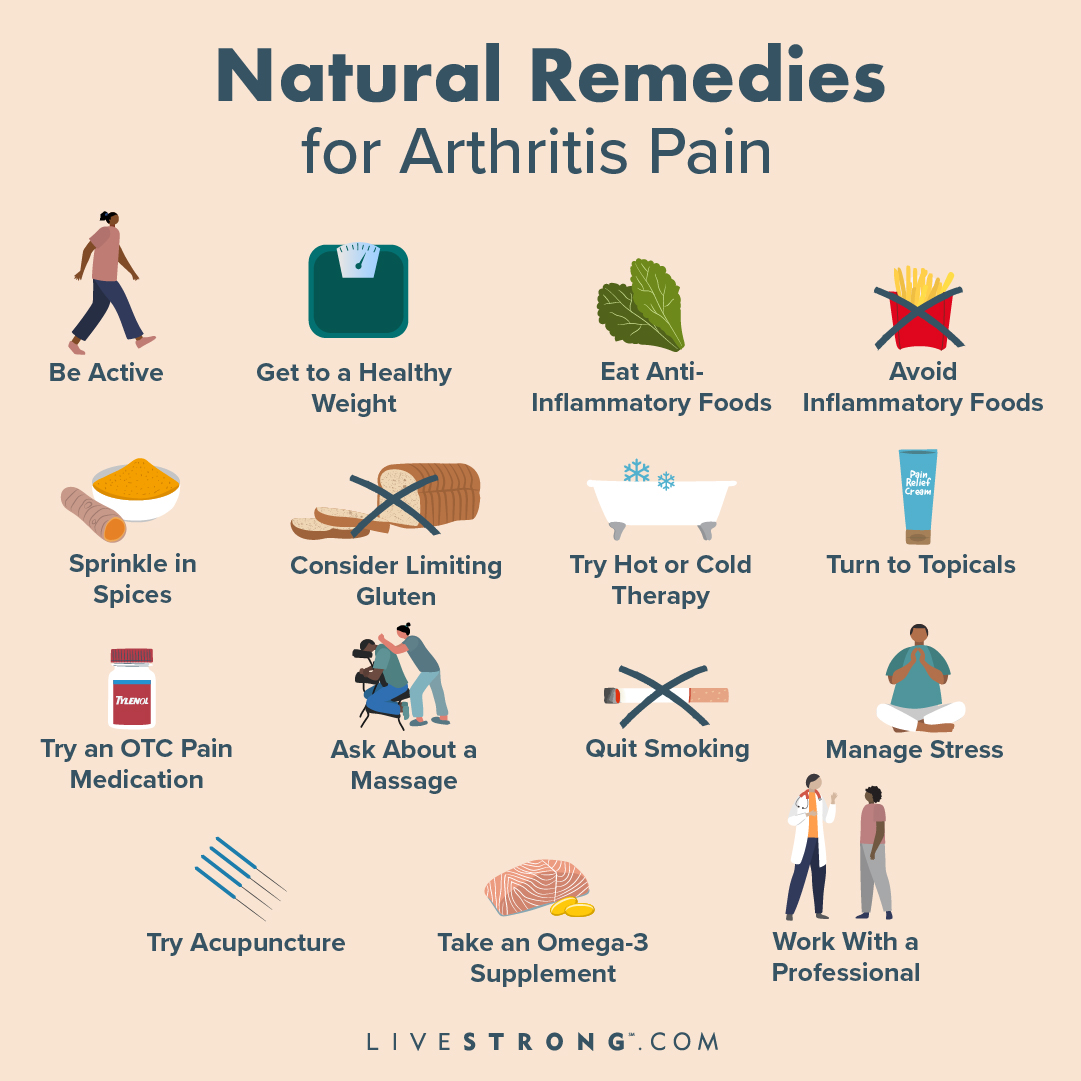
Arthritis pain can be challenging, affecting daily activities and reducing quality of life. While medication is commonly used for arthritis management, many people are turning to natural remedies to relieve pain and reduce inflammation. In this blog, we’ll cover some effective natural remedies for arthritis and lifestyle modifications that can help ease arthritis symptoms and improve joint health.
1. Turmeric
What it Does: Turmeric is known for its anti-inflammatory properties, largely due to its active compound, curcumin. Studies have shown that curcumin can help reduce joint pain and inflammation in people with arthritis, particularly osteoarthritis and rheumatoid arthritis.
How to Use It: Add turmeric to your diet by using it in cooking, smoothies, or teas. You can also take turmeric supplements, but it’s best to consult a healthcare professional for the correct dosage.
2. Omega-3 Fatty Acids
What it Does: Omega-3 fatty acids are known for their anti-inflammatory benefits, which can help reduce joint stiffness and pain in arthritis patients. Omega-3s also support overall joint health, helping to slow down cartilage degradation.
How to Use It: Increase your intake of fatty fish like salmon, mackerel, and sardines, which are rich in omega-3s. If you’re not a fan of fish, consider taking a high-quality fish oil or flaxseed oil supplement.
3. Ginger
What it Does: Ginger contains compounds that inhibit the production of chemicals in the body that contribute to inflammation. Like turmeric, ginger has long been used for its anti-inflammatory effects and can offer relief for arthritis pain.
How to Use It: You can use ginger in cooking or drink it as tea. Fresh ginger root, powdered ginger, or ginger capsules are all effective forms, but consult a healthcare provider if you’re considering supplements.
4. Epsom Salt Baths
What it Does: Epsom salt, rich in magnesium sulfate, can be absorbed through the skin and help relax muscles, reduce swelling, and alleviate pain. Epsom salt baths are popular for relieving joint pain and relaxing sore muscles.
How to Use It: Add about two cups of Epsom salt to a warm bath and soak for 15-20 minutes. Repeat this a few times a week for pain relief and relaxation.
5. Exercise and Physical Therapy
What it Does: Regular, low-impact exercise can help improve joint flexibility, strengthen muscles around joints, and reduce stiffness. Physical therapy can also help you learn exercises specifically tailored to reduce arthritis pain.
How to Use It: Engage in activities such as walking, swimming, or gentle stretching. Working with a physical therapist can provide additional guidance on exercises that strengthen the joints without causing more pain.
6. Hot and Cold Therapy
What it Does: Hot and cold therapy is a common approach for arthritis pain relief. Heat can relax muscles and improve blood flow, while cold therapy reduces inflammation and numbs pain.
How to Use It: Use a warm compress or heating pad for about 15-20 minutes on stiff joints, or try a warm bath. For swelling and inflammation, apply a cold pack wrapped in a cloth for around 15 minutes, several times a day.
7. Herbal Supplements
Several herbal supplements are known to help with arthritis pain and inflammation:
- Boswellia: Also called Indian frankincense, Boswellia has been used in traditional medicine for its anti-inflammatory effects.
- Willow Bark: Known as “nature’s aspirin,” willow bark can help reduce joint pain. However, it’s essential to consult with a healthcare provider before use, especially if taking other pain medications.
- Green Tea: Packed with antioxidants, green tea can help reduce inflammation. Drinking it daily may aid in managing arthritis symptoms.
8. Anti-Inflammatory Diet
What it Does: Certain foods can trigger or reduce inflammation in the body. An anti-inflammatory diet focuses on foods that naturally fight inflammation and support joint health.
How to Use It: Incorporate plenty of fruits, vegetables, whole grains, lean proteins, and healthy fats into your diet. Focus on foods rich in antioxidants and avoid processed foods, sugary drinks, and excessive refined carbs, which can worsen inflammation.
9. Weight Management
What it Does: Carrying excess weight puts extra pressure on weight-bearing joints, especially in the knees, hips, and spine. Losing even a small amount of weight can help reduce joint pain and prevent further joint damage.
How to Use It: Eating a balanced diet and engaging in regular physical activity can help you reach a healthy weight, which benefits your overall health and reduces arthritis symptoms.
10. Acupuncture
What it Does: Acupuncture, an ancient practice from traditional Chinese medicine, involves inserting thin needles into specific points on the body to reduce pain and improve energy flow. Many arthritis sufferers report pain relief and reduced stiffness after acupuncture sessions.
How to Use It: Look for a certified acupuncturist experienced in treating arthritis pain. Acupuncture is often used as a complementary therapy alongside conventional treatments.
Final Thoughts
While arthritis can be a chronic condition, natural remedies and lifestyle changes can significantly improve symptoms and quality of life. Trying a combination of these remedies, like adding turmeric to your meals, incorporating omega-3s, or soaking in an Epsom salt bath, can provide meaningful relief. However, always consult a healthcare provider before starting any new supplement, remedy, or exercise program, especially if you are already on arthritis medications.
By integrating these natural remedies for arthritis into your routine, you can support your joint health naturally and experience lasting relief from pain.

